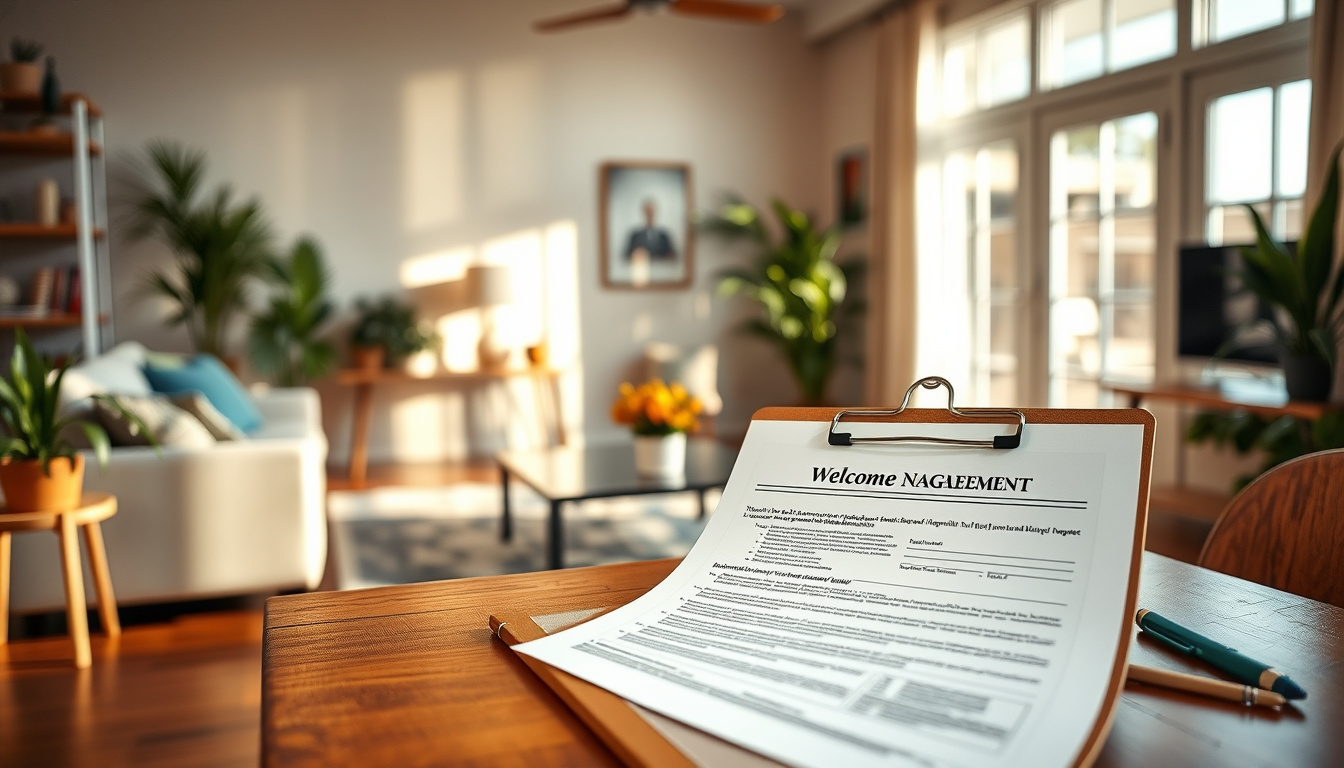Unlocking the Secrets: Essential Rental Agreement Templates for Every Landlord and Tenant
Navigating the rental market can be a daunting task for both landlords and tenants.
A well-crafted rental agreement is the cornerstone of a smooth landlord-tenant relationship, providing clarity and legal protection for both parties involved.
In this article, we will explore essential rental agreement templates that cater to a variety of rental needs, ensuring that both landlords and tenants are well-equipped with the necessary tools to formalize their arrangements.
Whether you're leasing out a cozy studio or renting a family home, understanding rental agreement templates is crucial for a successful lease experience.

Key Takeaways
- Rental agreements are crucial documents that establish the rights and responsibilities of both landlords and tenants.
- Key components of a rental agreement template include lease duration, rent amount, security deposit, and maintenance obligations.
- Short-term and long-term rental agreement templates serve different purposes and cater to varied rental situations.
- Customizing a rental agreement template is important for addressing specific needs and legal requirements unique to each rental.
- Avoid common pitfalls like unclear terms and outdated clauses to protect your interests as a landlord or tenant.
Understanding Rental Agreements: What They Are and Why They Matter
A rental agreement is a legally binding document between a landlord and a tenant that outlines the terms of renting a property.
It serves as the foundation of the landlord-tenant relationship, providing clarity and protection for both parties involved.
Understanding rental agreements is crucial for anyone looking to rent a home or put their property on the market.
One essential aspect of this process is using rental agreement templates.
These templates help streamline the creation of rental agreements by providing structured formats that ensure all necessary clauses, such as payment terms, duration of the lease, security deposits, and maintenance responsibilities, are covered.
By utilizing rental agreement templates, landlords can minimize risks and ensure compliance with local laws, while tenants benefit from knowing their rights and obligations upfront, paving the way for a harmonious rental experience.
Key Components of a Rental Agreement Template
When navigating the complex world of property rental, having a solid understanding of rental agreement templates is essential for both landlords and tenants.
A rental agreement template serves as a foundational document that outlines the expectations and obligations of both parties involved in a lease.
Key components of these templates typically include details such as the names of the landlord and tenant, property address, lease duration, rental payment terms, and security deposit requirements.
Additionally, well-crafted rental agreement templates often address maintenance responsibilities, pet policies, and procedures for terminating the lease.
Understanding these elements not only facilitates a smoother rental experience but also helps prevent disputes down the line, making it crucial for anyone involved in renting property to utilize comprehensive and clear rental agreement templates.
‘An ounce of prevention is worth a pound of cure.' – Benjamin Franklin
Types of Rental Agreement Templates: Short-Term vs. Long-Term
When it comes to managing rental properties, understanding the various types of rental agreement templates is essential.
Primarily, rental agreements can be categorized into short-term and long-term contracts, each serving different purposes and catering to varying tenant needs.
Short-term rental agreement templates are often used for stays of less than a year, ideal for vacation rentals or temporary housing situations.
These templates typically include clauses that foster flexibility, allowing both landlords and tenants to accommodate unexpected changes.
On the other hand, long-term rental agreement templates are structured for durations of one year or more, promoting stability for both parties.
They include detailed terms regarding rent, security deposits, and maintenance responsibilities, ensuring a smooth and professional rental experience.
Understanding these differences in rental agreement templates will help landlords choose the right one to meet their specific requirements while providing clarity and security for their tenants.

Customizing Your Rental Agreement: Important Considerations
When it comes to managing rental properties, customizing your rental agreement is crucial to ensure both landlord and tenant rights are protected.
Utilizing rental agreement templates can streamline the process and provide a solid foundation for your contract.
However, it’s essential to be aware of important considerations before finalizing your document.
First, determine the specific needs of your rental, including the duration of the lease, security deposit requirements, and maintenance responsibilities.
Personalizing the rental agreement template to reflect your unique terms can help prevent disputes in the future.
Additionally, familiarize yourself with local laws and regulations regarding rental agreements, as these can significantly impact your contract.
By taking the time to customize your rental agreement thoughtfully, you not only promote clear communication but also foster a positive relationship with your tenants.
Common Mistakes to Avoid When Using Rental Agreement Templates
When crafting your lease using rental agreement templates, it's crucial to avoid common pitfalls that could lead to misunderstandings or legal issues down the line.
One major mistake is failing to customize the template adequately.
Many users assume that a generic template will suffice, but it's essential to tailor the agreement to reflect specific terms relevant to your rental situation, such as the length of the lease, payment schedules, and maintenance responsibilities.
Additionally, overlooking the importance of local laws can be detrimental; what works in one state may not be legal in another, so always cross-reference templates with local rental regulations.
Another frequent error is neglecting to include all necessary details, such as security deposit procedures or rules regarding pets.
Finally, many skip a thorough review process, which can lead to ambiguity in the agreement.
By addressing these key areas when working with rental agreement templates, you can ensure a smoother rental experience for both you and your tenants.
Frequently Asked Questions
What is a rental agreement template?
A rental agreement template is a pre-designed document that outlines the terms and conditions of a rental arrangement between a landlord and a tenant.
It serves as a legal framework for the rental relationship.
Why are rental agreements important?
Rental agreements are important because they establish clear expectations between landlords and tenants, protect the rights of both parties, and provide legal recourse in case of disputes.
What are the key components of a rental agreement template?
Key components typically include the names of the parties involved, property address, rental amount, payment terms, duration of the lease, security deposit details, and rules regarding property use.
What is the difference between short-term and long-term rental agreement templates?
Short-term rental agreement templates are designed for leases lasting less than a year, often used for vacation rentals or temporary housing.
Long-term templates are for leases longer than one year and often include more detailed terms pertaining to tenant rights and responsibilities.
What common mistakes should I avoid when using rental agreement templates?
Common mistakes include not customizing the template to fit your specific needs, overlooking local laws and regulations, and failing to clarify all terms and conditions, which can lead to misunderstandings or disputes.







